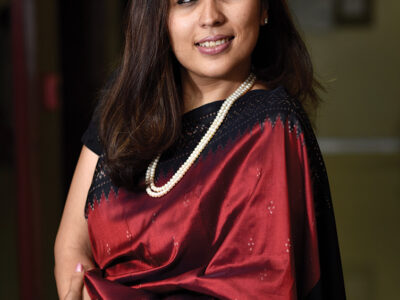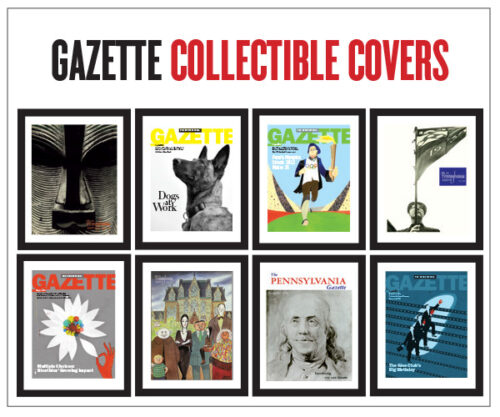
A pair of Wharton grads are trying to change the way women buy and wear bras.
Prior to cofounding Harper Wilde, Jenna Kerner WG’ 17 and Jane Fisher WG’17, like the other women in their Wharton management program, hated bra shopping. “I still have bras from high school,” Kerner admits. “I thought back and I could not remember the last time I went to go buy a bra—and if I wanted to go and purchase one, I didn’t know where I would go.”
That’s where Harper Wilde comes in—an online direct-to-consumer brand of undergarments known for simple styles and at-home try-on. Named for Harper Lee and Laura Ingalls Wilder, two authors who imbued their characters with a sense of easy familiarity, Harper Wilde aims to serve a woman’s “entire bra drawer” while streamlining the bra shopping experience into one that can be done from the comfort of home instead of the impersonal fitting rooms of a mall department store. Kerner, with a background in consumer psychology and neuroscience, cites the experience as the core of the brand, not the bra itself.
“We didn’t set out to make a better bra, because there are thousands of bras out there,” she says. “The problem for us—and this kind of comes back to our background in consumer behavior—was more that people actually didn’t want to go shopping for it and people actually couldn’t find what was the right bra for them.”
While the shopping experience might be paramount, Harper Wilde’s designs have been well received. Their strapless bra, the Flex, generated a 6,000-person waitlist last year, and each of their products are tailored with a specific kind of woman in mind. The Harper Wilde woman might run “around a board room or a hospital saving lives or a household,” Kerner says. “[The thought] of them reaching behind themselves to attempt to adjust a strap or standing in the middle of room fixing a bra because they’re uncomfortable—it’s just one more thing standing in the way of these powerful women continuing to strive to be successful.”
Kerner recalls underwiring poking at her skin while sitting in Huntsman Hall when Fisher first approached her with the idea of starting a bra company. “It immediately resonated with me,” Kerner says. “All of these direct-to-consumer business were popping up, [allowing us] to get all of these really complicated things easily—a mattress, a runway dress, glasses. … I remember saying, ‘Why can we get everything else we want so easily yet buying [a bra] is such a hassle?’”
Kerner and Fisher analyzed what made shopping for a bra, in Kerner’s words, “suck.” Part of it, they reasoned, comes from the discomfort and insecurity of being in a store. The other part stems from the lingerie industry, which Kerner believes churns out products created more for the male gaze than the customer herself. This meant tailoring Harper Wilde’s brand to suit the needs of women—which, based on market research conducted through polls and surveys, boils down to softness, support, and functionality.
“We talked to hundreds of women and everyone said they had 14 to 16 bras in their drawers but were only wearing two to three of them 90 percent of the week,” Kerner says. “There’s a time and a place and a space in the drawer for these more frilly and sexy options. But we’re not wearing them. [Our customer] isn’t grabbing them at 6 a.m. before a class or 5 a.m. before leaving for the hospital. She wants something that’s comfortable and supportive.”
Another part of Harper Wilde’s mission is to use bras as a catalyst for education. The company has recently teamed with Girls Inc.—a nonprofit organization that prepares girls to overcome gender and socio-economic barriers through professional development classes—and plans to partner with a rotating cast of other charities. Through informative blog and social media posts, it also aims to create a generation of informed female consumers who know the products they want to buy.
“At our core, we try to educate our customers on how to find the right bra sizes themselves rather than go through that awful experience in-store,” Kerner says. “We try to educate them on how to wash their bras and how often to replace them. As we dug into how women feel about this market, a lot of the common themes we kept hearing stemmed from not having that education piece. Bras are not something that people talk about all the time.
—Beatrice Forman C’22










